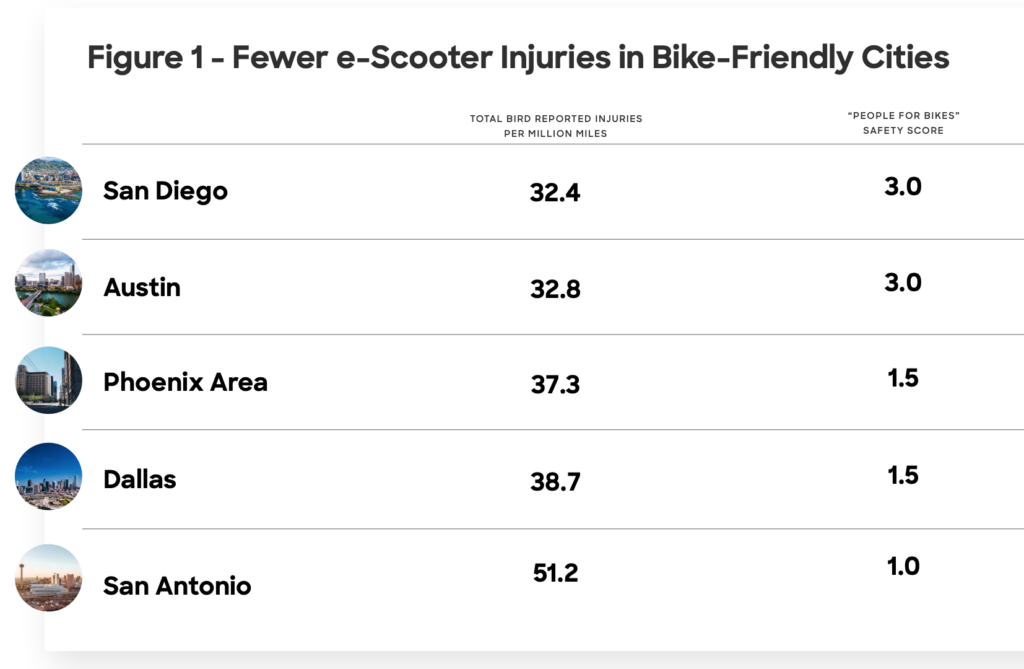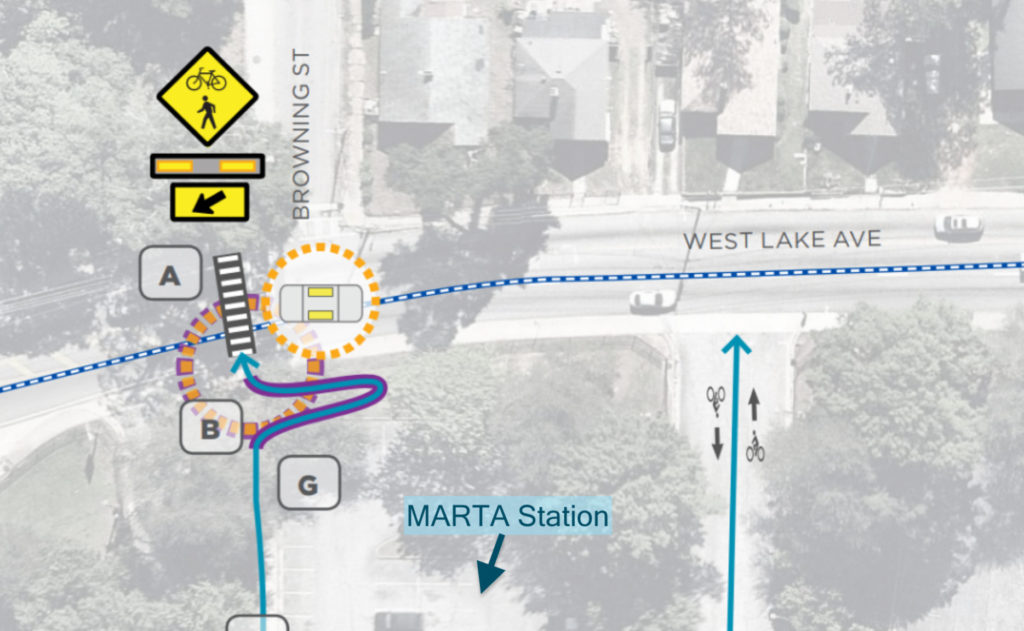This past Friday, 20-year-old Eric Amis Jr. died after being struck by a vehicle while riding a Lime e-scooter in the road outside West Lake MARTA Station. This is the first fatality involving a dockless e-scooter in the City of Atlanta.
According to WSB, the driver stayed on the scene of the tragedy. It’s not yet known if she’ll face charges.

We know very little about the details. The only testimony available is from the driver, who claims that Amis entered the road suddenly. Was car-speed a factor as well? There’s no mention of it in the report, but that’s obviously some serious damage to the car for collision between a person on a scooter and a SUV.
And how about the conditions of the road where the crash occurred? Are there any bicycle lanes where the scooter could have been riding? Are police enforcing the posted 25 MPH speed limit on this street?
These are all good questions to ask. But the WSB reporter doesn’t appear to have asked any of them.
Victim blaming in the news report
As we see all too often with reports on pedestrian deaths, news media is already putting some blame on a victim who is not around to speak for himself. Here’s a passage from the WSB report on the tragedy.
“Nina Shaw said she often sees riders not being very safe. “Down my street, people will just ride them recklessly, weaving in and out of traffic,” Shaw said. That recklessness has triggered a spike in the number of injuries to riders and pedestrians. Grady Hospital is now treating 80 to 100 scooter injuries a month. Wellstar Atlanta Medical Center is also seeing patients, some with serious injuries.”
Notice that “reckless” is introduced here by the reporter by way of a third party – not by the car driver or by the police report. The driver may have been going over the speed limit or distracted; we don’t know. But we do know that a collision between two people, where one is encased in tons of steel and capable of moving at a faster speed, is going to be a lot worse for the other one.
Yes, there’s a lot of controversy regarding dockless e-scooters. Many people have strong feelings about their ability to be a nuisance to pedestrians on sidewalks, whether in use or haphazardly abandoned and others have regarding them as a positive last mile option. That’s a discussion well worth continuing.
Also in need of discussion is the fact that the media immediately ascribed some blame for the fatality on the rider. Unfortunately, this is the norm. The scooter rider was “reckless.” The pedestrian wasn’t in the cross walk or was wearing dark clothes. The cyclist was… cycling.
Between cars and alternative transportation, the blame is rarely on the vehicle owner. It’s impossible to know if they were distracted and texting just by reading news articles about collisions. The automobile driver is assumed be be not at fault. Meanwhile, the pedestrian or cyclist, and now e-scooter rider, is “reckless.”
Next steps for Atlanta: stop blaming victims, start building better roads
What can we do as a city to improve safety for e-scooter riders? One answer might be found in a report published this year by Bird, from their own data study.

According to that report, U.S. cities with better bicycle infrastructure are seeing fewer scootering injuries. Atlanta is, no surprise, not listed among the cities with great conditions for cycling. It should be. A city that’s capable of voting for a TSPLOST for road improvements and building a world-famous BeltLine path should be capable of creating excellent cycling infrastructure.
And it turns out that the City of Atlanta already has a plan for making improvements to the street where the deadly collision happened, outside the West Lake MARTA Station. According to the Cycle Atlanta Phase 2.0 Study published in February 2018, there’s a recommendation for a raised island for getting pedestrians and cyclists safely into the street from the station. The island location is on the stretch where Amis was killed.

Here’s our call to action as a city: let’s stop blaming vulnerable road users and start building better streets. This Cycle Atlanta study is an adopted city plan, and this treatment of West Lake Avenue is a simple and cheap improvement. Just do it.
None of this is meant to imply that cycling infrastructure is the only safety improvement that’s needed on West Lake Avenue and elsewhere. We need more than bike lanes. We need safe streets for everyone and that means lower speed limits, better speed enforcement, bike lanes, sidewalks, all throughout the city. We need a cultural shift that enables the implementation of all those changes to the public realm of city streets, so that it truly belongs to all of us, and so that all of us belong there.
Authorship note: this post was written collaboratively by several ThreadATL founders and volunteers, and edited by Darin Givens.
NOTE: an earlier version of the post erroneously identified a police officer listed in the WSB article as the driver in the collision. We’ve removed the name from the post.
